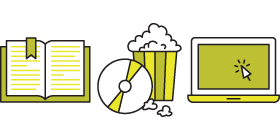Welcome to Week 2 of the Online Book Club discussion of The Boy Who Harnessed the Wind.
Are you enjoying the book so far? Did you find it hard to get into the story, or were you hooked right from the beginning? I found it a little hard to get into the story in the first few chapters. William's experiences and surroundings are just so different than anything I have ever experienced, so I found it a little hard to visualize everything that was going on. But, once I got going with the story, I really enjoyed it!
What did you think about the fact that the book started with a description of the windmill actually working? Did that make you more motivated to keep reading? It made me feel excited because I knew he was going to succeed, and I was interested to see how he actually did it.
In this beginning section, we don't learn much about the windmills and William's experiments. Intsead, there is a lot of explanation of his village and the government of Malawi and the growing seasons. It was really sad to learn about the reasons why William's village experienced a famine. Did you catch that he said that deforestation caused rains to turn to floods, and that washes away soil and minerals? And, all of the rains wash away the fertilizers. It's interesting to think how rain can be so damaging because rain is also so necessary for the growing process. What did you think about William's description of the growing season in Malawi? What a difference to be planting in December through March! I was surprised that the dry season was August through November. They are completely opposite of us here in Ohio. When talking about the growing season, William mentions that that nsima is eaten at every meal. If you're curious to see how nsima is made, check out the video below.
In the last chapter in this section, the famine has hit William's village. Wasn't it heartbreaking that the people were depending on extra food from the government, but all of that food was sold to Kenya for a profit? What do you think the people are going to do? How can they make it until the next growing season? Immediately, people start selling and eating the gaga, the husks of the maize. William says that normally, he uses the gaga as a bait for his bird traps or as food for the chickens. But, the people are already desperate. William's family seems better off than some, but by the end of this chapter, WIlilam realizes that they are going to run out of food in a month, but they have over 200 days until the next harvest. His family has to sell their goats, too. Do you think his family is going to be ok? Do you think some food will come to them from some other source?
In this last chapter, William learns a bit about wind energy through the bike wheel and the light that's powered by a dynamo battery. William is very interested to know why the rotation of the bike wheels causes the dynamo to power the light. I was so impressed by how fearless William was when he was determined to figure out how something worked. He wasn't afraid to move wires around or take things apart. He mentions that the experiment with the bike made him think about electricity--did you notice that he said that most people used kerosene lamps to see at night? But, with the price of fuel being so high, they didn't use the lamps all the time and instead, went to bed as soon as it got dark. I think that would be really hard! I'm a night owl, so I would struggle to go to bed early.
What do you think is going to happen to William and his family in the next section? Are you excited to read about his first experiments with wind power?
I hope you enjoyed this first section and are excited to read the next five chapters for next week. Make sure to leave me a comment to let me know what you thought of this section!




Add a comment to: The Boy Who Harnessed the Wind, Week 2